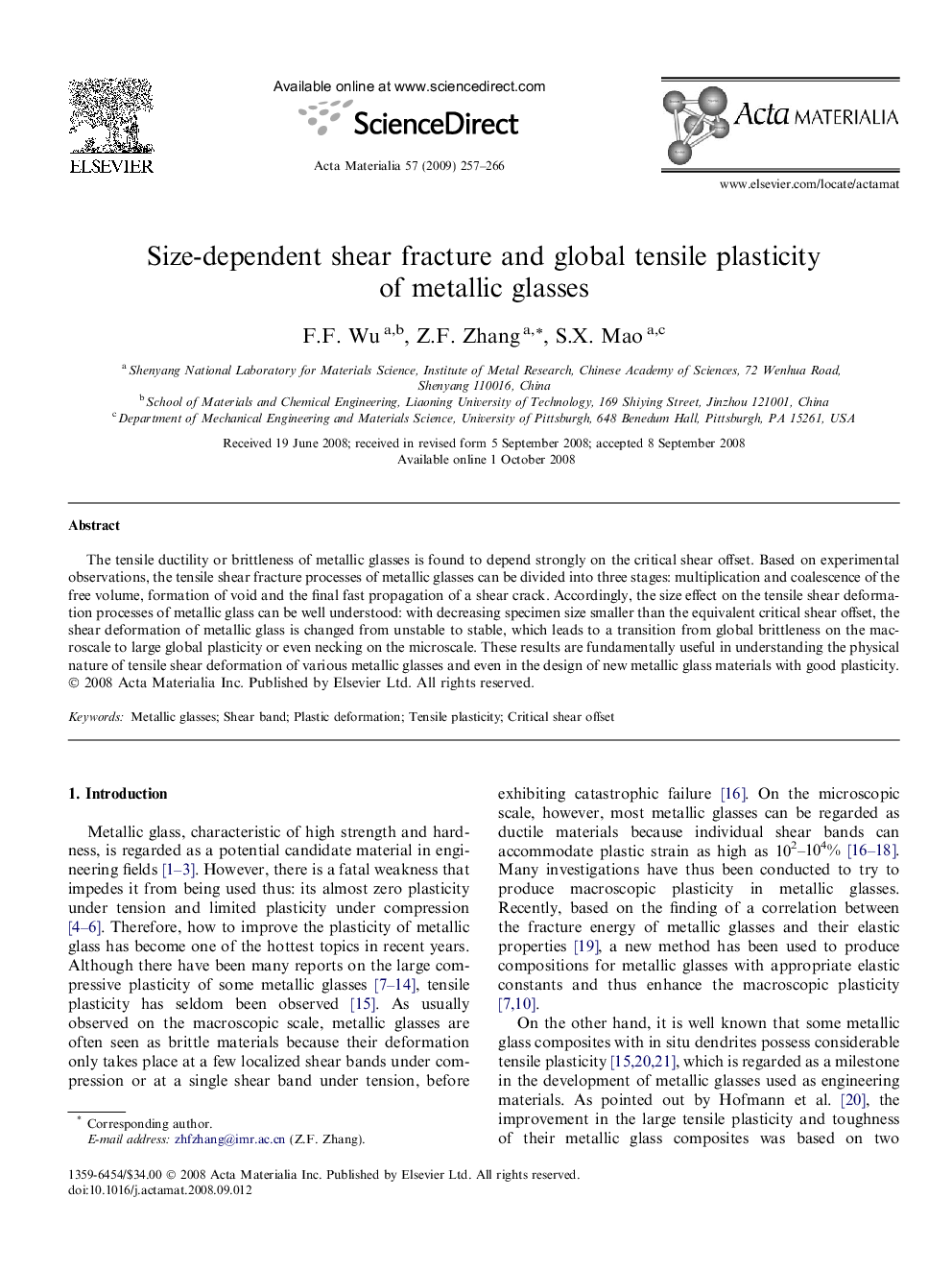| Article ID | Journal | Published Year | Pages | File Type |
|---|---|---|---|---|
| 1448506 | Acta Materialia | 2009 | 10 Pages |
The tensile ductility or brittleness of metallic glasses is found to depend strongly on the critical shear offset. Based on experimental observations, the tensile shear fracture processes of metallic glasses can be divided into three stages: multiplication and coalescence of the free volume, formation of void and the final fast propagation of a shear crack. Accordingly, the size effect on the tensile shear deformation processes of metallic glass can be well understood: with decreasing specimen size smaller than the equivalent critical shear offset, the shear deformation of metallic glass is changed from unstable to stable, which leads to a transition from global brittleness on the macroscale to large global plasticity or even necking on the microscale. These results are fundamentally useful in understanding the physical nature of tensile shear deformation of various metallic glasses and even in the design of new metallic glass materials with good plasticity.
